What We Leave Behind: New narratives in a queer archive
As the first artist-in-residence at the San Francisco GLBT Historical Society, EG Crichton adopted the role of a matchmaker of sorts. After spending hours researching in the archives she had the idea to personally match a living person with a dead person’s archive, extending a unique invitation to ten people to create a response to the experience of exploring a stranger’s life through what they have left behind. Crichton’s matchmaking was largely intuitive and sometimes inspired by shared demographics. The results of this matchmaking is a dynamic and comprehensive exhibition entitled Lineage: Matchmaking in the Archive that includes both the contents of the archive itself, as well the creative responses to them. The exhibition features visual artists, musicians, poets, and performers including Elliot Anderson, Dominika Bednarska, Troy Boyd, Luciano Chessa, Crow Cianciola, Lauren Crux, Bill Domonkos, Tirza Latimer, Maya Manvi, Camille Norton, Gabriella Ripley-Phipps, and Tina Takemoto. From cardboard boxes filled with journals, articles of clothing, ephemera, films, letters, and photographs emerged sculptures, poetry, performances, films, letters, and music.
The opening night featured three performances including a poem written by Camille Norton and inspired by the archive of Nancy Stockwell, an aria composed by Luciano Chessa for his match, Larry DeCaesar and the monologue “Dinosaurs & Haircuts” by Lauren Crux. Crux’s performance was inspired by her experience sifting through the archive of Janny Mac Harg, a San Francisco songwriter, cabaret singer, and political activist. Crux discussed the way in which the archive reflected to her her own role as a lesbian in the latter half of her life while humorously and poignantly interrogating the archive itself: “I suppose that eventually we are all only our artifacts but why does this bother me so much? It’s not death I am afraid of. Like most of us, I hope to have a good death, to go out quickly or gently during sleep without much pain. So, why does the idea of archives bother me so much? Oh, it’s the damn cardboard boxes.”
As I sat tucked in the last row of fold-out chairs in the back corner of the crowded room, listening to Crux’s concern about preservation and the inevitability of one’s life being reduced to a collection of objects stored in a box marked “Acid Free,” I realized that I was one of the youngest visitors at the GLBT Historical Society. There was something affirming about sharing space with an older queer community; a group of people whose own experience of gender and sexuality was informed by a social and political context entirely different than today, people whose struggles and contributions paved the way for today’s generation of queer artists and activists. In this moment the title of this exhibition was more than just relevant, it was visible.
What interested me most about Crichton’s project is the way it asks you to interrogate the form of the archive itself. This was present not only in Crux’s monologue, but other pieces as well, including Gabriella Ripley-Phipps’ “The Archival Dinner Party” created in response to her pairing with Sally Binford. In “The Archival Dinner Party” Ripley-Phipps asked a group of eight people to prepare their own archive. Later at a dinner party these eight people were assigned an archive to examine, answering questions on an archive form about what they learned about this person through their objects. The form included questions about the age and location of this persons first kiss, their bad habits, reasons for crying, fears, and whether or not they had a good relationship with their parents—questions that no objects in the archive could factually answer and yet, simply by asking these questions Ripley-Phipp’s highlights the way that our objects come to define us. “The Archival Dinner Party” culminated in the pairs of people sharing with one another their experience of exploring each other’s archives over dinner. In this piece the archive is activated among the living as a tool for social networking while embracing the imagination necessary when intervening within an archive.
Tina Takemoto, a queer, fourth generation Japanese American artist was paired with Jiro Onuma. Onuma was a Japanese gay man who immigrated to the United States in 1923 and was incarcerated in an internment camp during World War II. Through his archive Takemoto learned that Onuma collected male physical culture magazines and was a member of Earle E. Liederman’s Physical Culture School. While the experience of the internement camps have been thoroughly documented, Takemoto wondered about the gay or lesbian experience of imprisonment during this time. In particular she wondered how Onuma survived “the isolation, boredom, humiliation, heteronormativity of internment as a dandyish gay bachelor from San Francisco obsessed with erotic male physical culture magazines.” In her response Takemoto imagined just how Onuma might have endured this period of time through her creation of a “Gentleman’s Gaman: A Gay Bachelor’s Japanese American Internment Camp Survival Kit.” This kit included handmade objects such as exercise devices, playing cards, cuff links, and recreations of the erotic male exercise magazines. By intervening within the archive of someone whose sexuality and racial identity was rendered invisible and threatening during his lifetime, Takemoto grants Onuma a visibility and credits his survival to a queer imagination.
For Crichton, the project is very much about visibility. In her words Lineage: Matchmaking in the Archive “brings the archives off their shelves, out of the temperature controlled archive space and into broader public visibility.” Crichton made this relationship between the living and deceased artists visible through large photographs of the artists posing with projected photographs of their archive match. These photographs are an integral aspect of the exhibition making visible a relationship forged through time.
In an archive we are faced with our impending mortality and with questions of what objects will be left behind to represent an entire life. In this sense, an archive is inherently fractured and can never take account of one’s entire personality, experience, or life. I imagine for the artists invited to participate in Lineage: Matchmaking in the Archive it was what was left out of the archive that served as inspiration, that drove them to make things up, to fill in the blanks themselves, and somehow reinvent their archive match. The project of archiving seems especially pertinent for a queer community. For those whose lives are lived on the margins and are repressed by societal and political conditions, the project of archiving guarantees visibility and a legitimate place within society. However, more than that, Crichton and the artists of Lineage: Matchmaking in the Archive offer new interpretations and narratives inspired by past events. In this sense, it has less to do with remembering and paying homage to those who came before us, and more to do with how to make this history relevant today.
In a space that encourages the contemplation of mortality and the lineage between the living and dead, Crux’s performance offered a certain kind of levity that gave permission to laugh at ourselves and the way that our histories are written: “If I am archived, please, no manilla colored file folders. Use new folders that come in contemporary colors—maroon, lavendar, lime green, ruby and gold. And I want the folders to have titles like Crones, Hags, Curmudgeons, Great Old Broads, Deeply Committed Troublemakers, Miscellaneous Brilliance, and Patriarchy as Surrealism.”
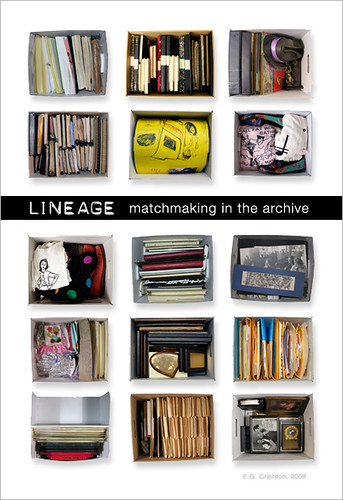
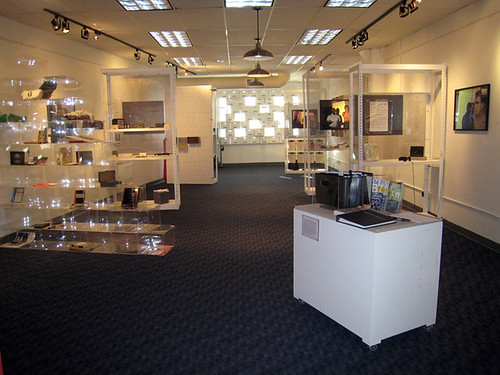
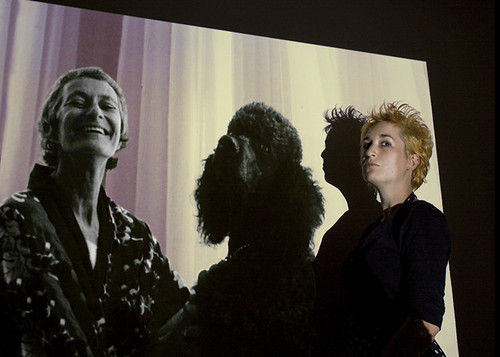
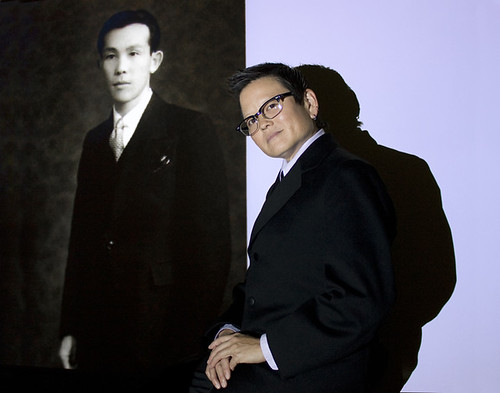
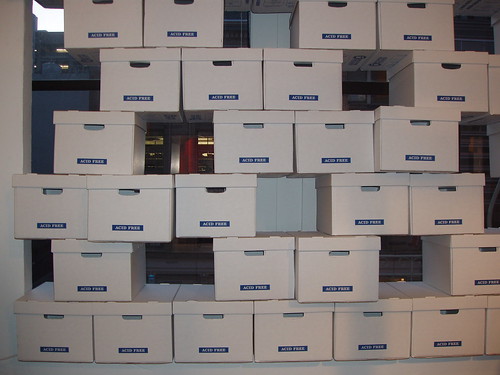
Comments (1)
Adrienne, I’m fascinated by the archival project and impressed, extremely impressed with your analysis and insights. Just wanted to let you know that I use to do something sort of like this when I was teaching high school creative writing. I’d stash a myriad of unrelated objects that I’d find around my house into a, yes, cardboard box and hall it into the classroom and put it on a table in the front of the room. One by one the students would take an object from the box, inspect it, show it to the class, and line it up on the table. When everything was out of the box, the students would have to create a character and plot about someone who would’ve owned all of these things. I must’ve done this activity fifteen to twenty times over the years with different groups of students and what blew my mind when I was reading your blog was that the cast of characters and the conflicts they faced, as imagined by the teen writers, were astoundingly varied and rich, – each one so very different from any of the others – yet all of the objects in the box were really mine, my archive. So what they created was in some essential way about me. It was a visualization of who I was based on concrete examples of what I owned and valued and loved. I wish now I would’ve kept those pieces of writing. They might’ve served as inspiration as I reinvent myself again and again, as life moves on, and before someone else has to load the last of my junk into a cardboard box. Also, I wish I could visit the exhibition and see you. Keep up the good work!